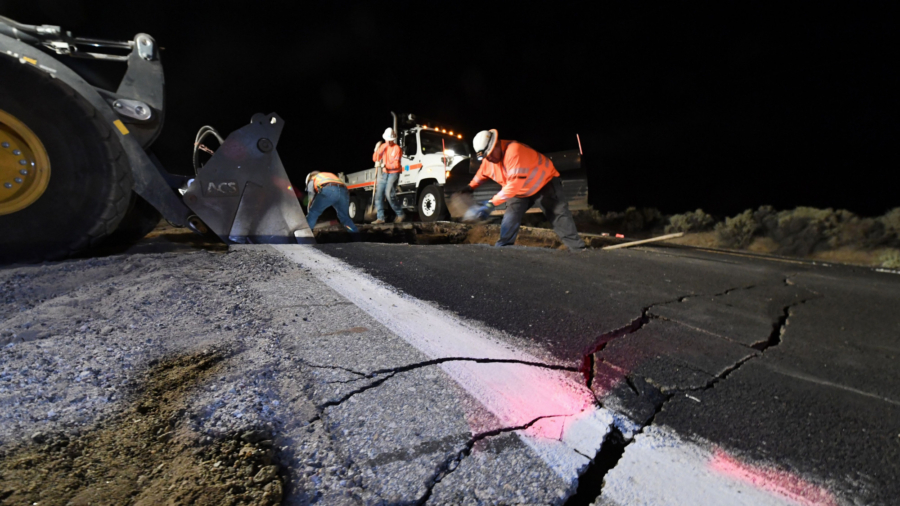California was struck by six earthquakes of a 3.5-magnitude or greater over a 24-hour period beginning in the morning of July 16, according to the US Geological Survey. One of those struck the San Francisco Bay area at a magnitude 4.3. Another—a strong 4.5-magnitude—jolted Ridgecrest around the same time, the US Geological Survey reported.
That community was already on edge following two powerful earthquakes on July 6, one a magnitude 7.1, the strongest to hit the state in two decades.
More than 500 earthquakes of 3-magnitude or greater have followed the massive earthquake in its aftershock sequence.
With so many, some residents have been left to wonder if the big one is coming. Well, not necessarily.
What Is ‘The Big One’?
Geologists have warned that California is probably “overdue” for a major earthquake along the San Andreas Fault, which runs inland from the Bay Area through the state’s southern border.
That earthquake has been ominously dubbed, “The Big One.”
The southern part of the fault usually has a large quake every 150 years, according to the USGS. The last one to happen there was in 1857.
“One should always be preparing for a Big One,” Dr. Lucy Jones, a seismologist with the California Institute of Technology, said.
So Is It Coming?
Yes. Someday. But will that day be tomorrow? That is impossible to say.
There’s about a 2% chance of the Big One occurring each year, Jones said on Twitter, or about 1 in 20,000 every day.
If the daily probability of the Big One was 50/50, then the chance it would happen in the next week would be >99%. Real probability is about 2% per yer, or 1/20,000 each day. Your change of being in a car accident today is ~1/7,000. I still wear my seat belt every day. https://t.co/3ovnAfiPFV
— Dr. Lucy Jones (@DrLucyJones) July 3, 2019
While seismologists can make predictions about the chances of aftershocks immediately following a big quake and can calculate a forecast based on statistical analysis, they cannot predict exactly when or where The Big One—or any one—will strike, according to the USGS.
But Are All of These Earthquakes Connected?
No. The earthquakes are striking on different fault lines.
Tuesday’s quake in the Bay Area occurred on the Greenville Fault, the USGS said. The Ridgecrest earthquake and aftershocks struck at the Little Lake fault zone.

What are connected are the initial quakes and then their subsequent aftershocks, known as a sequence.
But There Have Been So Many!
In the immediate, it feels like a lot. But, it hasn’t been enough to point to a devastating quake.
Over the last two decades, Jones said, Southern California has experienced “an extremely quiet time” when it comes to seismic activity.

A seismological event big enough to be The Big One would likely see a period of increased activity for several years, according to the USGS.
However, USGS researchers are predicting that there is a 70% chance the San Francisco Bay area will see a 6.7 magnitude earthquake or higher along the San Andreas fault before 2030.
Then What Is Next?
The USGS warns that there is a small chance that a large aftershock will follow the Tuesday and Wednesday morning tremors, but it is more likely that smaller earthquakes will happen over the next week.
As time goes on, the USGS said, the number of aftershocks drops off.
But if a bigger one does come back around, the USGS says: drop, cover and hold on.
![]()

